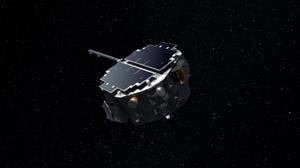Science
Starship V3 Set for 2026 Launch After Successful Final Test of Version 2

The final launch of Starship Version 2 took place on October 13, 2023, successfully concluding nearly two years of testing for the rocket. This 11th suborbital flight not only marked a significant milestone for SpaceX but also paved the way for an upgraded model, Starship Version 3, which is scheduled to debut in 2026. The new iteration aims to advance SpaceX’s capabilities for orbital tests and missions beyond Earth.
Starship Version 3 will feature enhancements that include an increase in height by approximately 5 feet (1.5 meters) and improvements for carrying more propellant. It will also incorporate new docking adapters designed for in-orbit fuel transfers, which are crucial for extended space missions. These upgrades are integral as SpaceX plans to utilize the next-generation vehicle for transporting payloads to orbit as well as for missions to the Moon and Mars.
The recent test flight served as a platform for numerous in-flight demonstrations, showcasing improvements made to the rocket. Although the last two flights of Version 2 were successful, the early part of the year saw a series of mission failures. Despite these challenges, SpaceX is optimistic about the advancements made and is now focusing on the next version of its rocket.
“Focus now turns to the next generation of Starship and Super Heavy, with multiple vehicles currently in active build and preparing for tests,” SpaceX stated in an official announcement. This ambitious upgrade aims to facilitate the first orbital flights of Starship, operational payload missions, and propellant transfer activities. The ultimate goal is to create a fully reusable vehicle capable of servicing a range of destinations, including Earth orbit, the Moon, and Mars.
To support longer-duration missions, the new version will utilize the enhanced third-generation Raptor engines. SpaceX spokesperson Dan Huot noted during the test flight webcast that significant upgrades are being made, including improvements in energy storage and avionics systems. These will enable the rocket to perform more complex missions.
An essential feature of the upcoming design is the ship-to-ship propellant transfer system, allowing Starship to refuel in space. Huot emphasized the importance of new docking adapters, stating, “One notable thing you’ll start seeing on the outside are these new docking adapters, which we’ll use when we bring two Starships together for propellant transfer.” This capability is expected to be demonstrated in the coming year.
As with any new vehicle prototype, there will be challenges associated with the transition to Starship Version 3. SpaceX founder Elon Musk acknowledged that this iteration represents a radical redesign, which may lead to initial difficulties. During a September interview, he indicated that “pretty much everything changes on the rocket with version 3,” hinting at the complexity of the updates.
Musk has expressed a desire to send an uncrewed Starship to Mars during an upcoming launch window next year. However, the readiness of the rocket for such ambitious endeavors remains uncertain. As SpaceX navigates these developments, the aerospace community will be closely monitoring the progress and capabilities of the next-generation Starship.
-

 Technology5 months ago
Technology5 months agoDiscover the Top 10 Calorie Counting Apps of 2025
-

 Health2 months ago
Health2 months agoBella Hadid Shares Health Update After Treatment for Lyme Disease
-

 Health3 months ago
Health3 months agoErin Bates Shares Recovery Update Following Sepsis Complications
-

 Technology4 months ago
Technology4 months agoDiscover How to Reverse Image Search Using ChatGPT Effortlessly
-

 Technology1 month ago
Technology1 month agoDiscover 2025’s Top GPUs for Exceptional 4K Gaming Performance
-

 Technology2 months ago
Technology2 months agoElectric Moto Influencer Surronster Arrested in Tijuana
-

 Technology5 months ago
Technology5 months agoMeta Initiates $60B AI Data Center Expansion, Starting in Ohio
-

 Technology5 months ago
Technology5 months agoRecovering a Suspended TikTok Account: A Step-by-Step Guide
-

 Health4 months ago
Health4 months agoTested: Rab Firewall Mountain Jacket Survives Harsh Conditions
-

 Lifestyle5 months ago
Lifestyle5 months agoBelton Family Reunites After Daughter Survives Hill Country Floods
-

 Technology4 months ago
Technology4 months agoHarmonic Launches AI Chatbot App to Transform Mathematical Reasoning
-

 Technology3 months ago
Technology3 months agoUncovering the Top Five Most Challenging Motorcycles to Ride





















